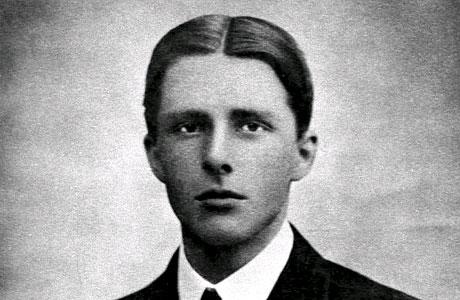
When I sorted through my books this summer, I wasn’t surprised to see that barely any of the books I own are ‘contemporary’ – read post 1980. The vast majority of my library is the Persephone and Virago type of midcentury women’s writing, with a smattering of classics. I just don’t ‘do’ modern literature. Too often, I find it lacking in substance and style, with far too much focus on experimentation and MA-in-Creative-Writing type heavy-handed overwriting that ruins any attempt to actually tell a story. It is very rare that I will read a modern novel and be blown away by it. There have been some absolutely brilliant novels produced in the last 26 years, don’t get me wrong; Possession, The Hours, The Secret History, Alias Grace, and Gilead, just to mention a few. However, considering the sheer volume of what gets published these days, and what out of that volume gets praised, I do find it very disheartening that the majority of what gets shoved in our faces by publishers and literary types is just plain old dross. Where’s the passion? Where’s the style? Where’s the skill in writing beautifully crafted yet accessible language that weaves a story which entertains while it educates? At the risk of sounding 90, they don’t write them like they used to. However, once in a while someone manages to produce something marvellous that has me swearing that I will be more open minded about modern literature, and I am pleased to say that Alan Hollinghurst has done just that with The Stranger’s Child.
The novel is a multigenerational saga taking us from 1913 to the present day, exploring the rise and fall of two families whose lives are linked through their relationship with Cecil Valance, a boy poet whose premature death in WW1 brought him a fame his talent never truly merited. It’s an intriguing premise, with a complicated and heavily populated narrative that prompts more questions than it gives answers every time the plot moves forward into a new time phase. Much of the pleasure of the novel is in its surprising connections and thoughtful revelations, which makes it difficult to write about without ruining the plot. What I will tell you is that it begins just before WWI, with the visit of Cecil to the home of his Cambridge friend George Sawle, who lives at Two Acres, a suburban villa in countryfied North London. The heir to a large country estate and a baronetcy, Cecil is rich, confident, charming and already a minor success as a poet. Daphne, George’s impressionable teenage sister, is completely awed by him, but unbeknownst to her, Cecil only has eyes for George. On leaving Two Acres, Cecil writes a poem in Daphne’s visitor’s book, which everyone but George reads as a love letter to Daphne. This weekend visit to Two Acres and the poem Cecil leaves behind will prove to change Daphne and the rest of the Sawle family’s lives forever. When Cecil is killed in action, his poem ‘Two Acres’ becomes the anthem of his generation, destined to be studied by schoolchildren for decades to come. Daphne, thwarted in her love for Cecil, marries his younger brother Dudley instead, and gets to live in the grossly unfashionable gothic pile that Cecil should have inherited, but which he now inhabits in the form of a life size marble tomb.
As we fast forward through time, catching glimpses of Daphne and her descendants across the 20th and 21st centuries, we see the fortunes of the intertwined Sawle and Valance families wane dramatically, as Corley leaves Valance hands and Cecil becomes a minor footnote in the history of British literature, his poetry dismissed as sentimental rubbish as the postmodern revisionists arrive on the academic scene. Its central theme, through the exploration of Cecil’s changing literary reputation, is a meditation on memory and myth; of how we rewrite and idealise our pasts, creating a version of the truth that has little basis in fact to suit our own purposes. It is also a chronicle of 20th century British history, charting the rise and fall of the great landed families and their estates, and the burgeoning modern obsession with celebrity, exposés and smut. In many ways it echoes the traditional country house novel, with every jump forward in time being focused around a house party or gathering of some nature, and there are also overtones of an homage to Brideshead Revisited/The Go Between and its ilk in its middle class characters’ hero-worship of the eccentric Valance family and their imposing family home. What makes it very up to date, however, is in its open discussion of homosexuality, which every male character seems to have dabbled in at one point or another. The mystery surrounding Cecil’s sexuality will prove to be of key importance in the re-and-de-construction of his reputation that takes place in the decades after his death, and it is telling that we begin with two boys having a guilty fumble in a bush but end with a scene of openly gay partners flashing wedding rings, demonstrating the huge strides forward in the acceptance of homosexuality in society over the last century.
It’s a rich and ambitious novel, intelligent and thought provoking, literary and learned, yet without being pompous or turgid. It feels fresh and vibrant, coming at the British literary tradition of exploring class and heritage in a completely innovative way. I loved the notion of using a Rupert Brooke-esque WWI poet and his changing reputation as a vehicle in which to span the changing face of Britain over the past century, and if you want something clever and different that will absorb and intrigue you, I highly recommend giving this a go. I’m still thinking about the characters several days after finishing, and wondering about the ending, which was truly inspired. I have been heartened by The Stranger’s Child; brilliant modern fiction does exist, and now my challenge is to find some more like it!
